Ear piercings are one of the most versatile and expressive forms of body art. From the classic lobe to intricate cartilage styles, there are dozens of piercing types to choose from. But with so many options, it’s easy to get confused about what each one is called.
That’s why we’ve put together this ultimate guide to ear piercings names—so you’ll know exactly what to ask for at the piercing studio and how to style your dream ear stack.
Table of Contents
Why Learn Ear Piercing Names?
Knowing the names of different piercings helps you:
- Communicate clearly with your piercer
- Explore unique styles beyond the basic lobe
- Mix and match placements for a curated ear look
- Avoid confusion between similar piercings
Think of it like learning the names of different hairstyles—each one has its own personality and vibe.
Main Categories of Ear Piercings
Before we dive into specific names, let’s break them into categories:
- Lobe Piercings – Soft, fleshy part of the ear (heals fastest).
- Cartilage Piercings – Upper, harder part of the ear (slower healing).
- Inner Ear Piercings – Inside folds and curves of the ear.
- Unique & Trendy Piercings – Less common, more stylish options.
Lobe Piercings Names
1. Standard Lobe Piercing

The most classic piercing, placed in the lower earlobe. Perfect for beginners.
2. Upper Lobe Piercing
Placed slightly above the standard lobe. Great for stacking multiple studs.
3. Double or Triple Lobe Piercings
Multiple piercings along the lobe, often lined up in a row.
4. Transverse Lobe Piercing
Instead of going front-to-back, the jewelry passes horizontally across the earlobe.
Outer Ear Cartilage Piercings Names
5. Helix Piercing
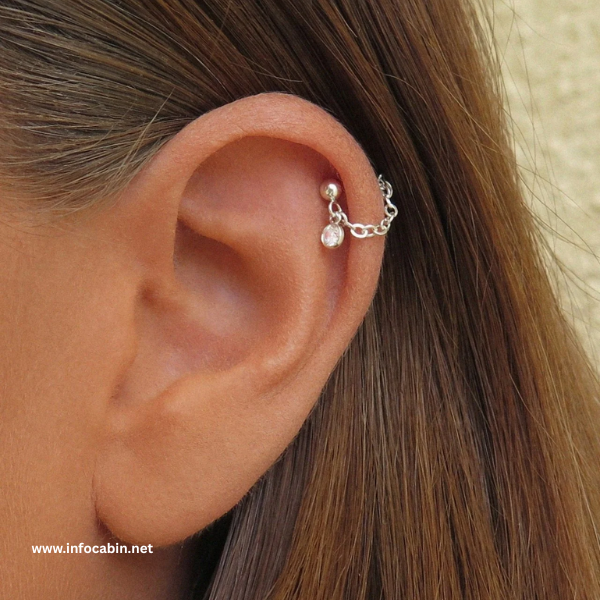
Located on the upper outer rim of the ear. A very popular cartilage piercing.
6. Forward Helix Piercing
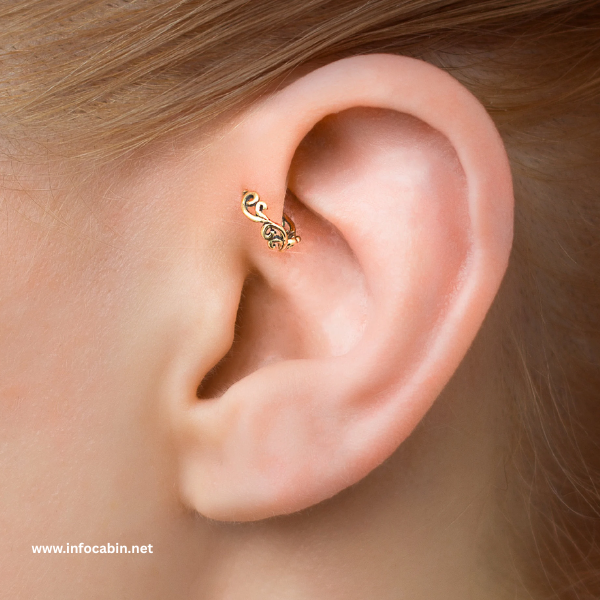
Done closer to where the ear connects to the head. Can be single, double, or triple.
7. Industrial (Scaffold) Piercing
A barbell connecting two piercings across the ear cartilage. Bold and edgy.
8. Auricle Piercing
Auricle piercing Placed between the lobe and helix, usually on the outer rim.
9. Snug Piercing
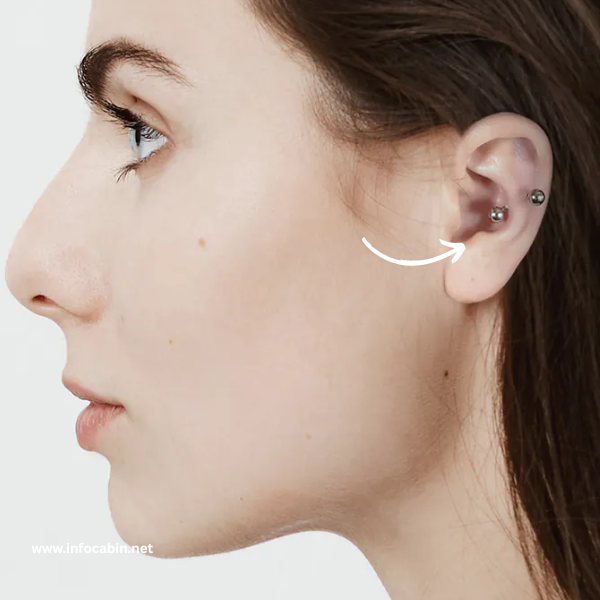
A horizontal piercing on the inner ridge, just above the anti-tragus.
Inner Ear Piercings Names
10. Tragus Piercing
Located on the small flap of cartilage in front of the ear canal.
11. Anti-Tragus Piercing
Across from the tragus, above the lobe.
12. Daith Piercing
Pierces through the innermost fold of the ear. Stylish and often linked to migraine relief (though not medically proven).
13. Rook Piercing
Goes through the inner ridge of cartilage above the daith.
14. Conch Piercing
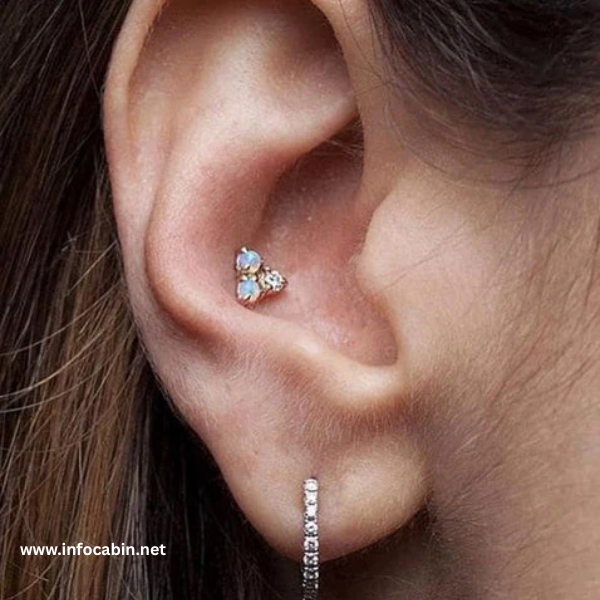
Located in the middle “shell” of the ear. Can be inner conch (stud) or outer conch (hoop that hugs the ear’s outer edge).
Unique & Trendy Ear Piercings Names
15. Orbital Piercing
Two holes connected by one hoop, often seen in the lobe or conch.
16. Flat Piercing
Placed on the flat area of cartilage between the helix and rook. Great spot for studs.
17. Vertical Industrial
Similar to an industrial but runs vertically instead of horizontally.
18. Scaffold Variations
Custom industrial placements depending on ear shape.
19. Surface Piercing (Ear Project)
Flat surface piercings done on parts of the ear for unique jewelry placement.
20. Ear Weaving
Multiple piercings connected with a single long piece of jewelry that weaves through the ear.
Healing Times for Different Ear Piercings
- Lobe piercings: 6–8 weeks
- Cartilage piercings (helix, tragus, etc.): 4–12 months
- Industrial piercings: 6–12 months
- Conch piercings: 6–12 months
Healing time depends on placement, jewelry type, and aftercare.
Choosing the Right Ear Piercing for You
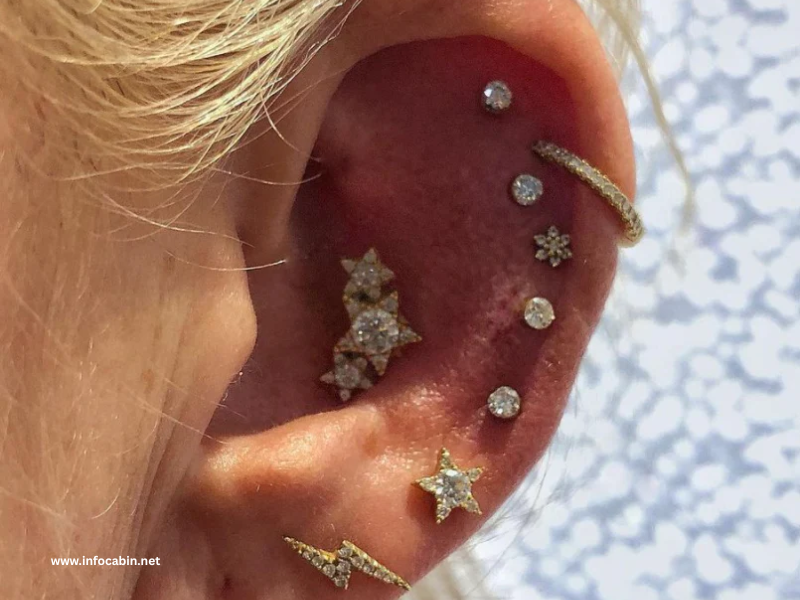
When deciding, think about:
- Pain level (lobes = low pain, cartilage = more pain)
- Healing time
- Lifestyle (headphones, helmets, sports)
- Personal style (minimalist vs. statement look)
Most Popular Ear Piercing Combos
- Curated Ear: A mix of studs, hoops, and cuffs across different areas.
- Double Helix + Lobe Stack: Balanced and stylish.
- Industrial + Conch: Edgy and bold.
- Rook + Daith + Tragus: Inner ear statement look.
Aftercare Tips for All Ear Piercings
- Clean with saline solution twice daily.
- Avoid twisting or moving jewelry.
- Sleep on the opposite side or use a travel pillow.
- Don’t remove jewelry until fully healed.
Common Problems with Ear Piercings
- Infections: Swelling, redness, pus → clean with saline, see piercer or doctor.
- Irritation bumps: From friction or bad jewelry.
- Keloids: Raised scar tissue—common in cartilage piercings.
- Allergic reactions: Caused by nickel or cheap metals.
Conclusion
There are dozens of ear piercings names, from simple lobes to intricate cartilage and inner ear placements. Each piercing has its own look, vibe, and healing journey, which means you can completely customize your ear aesthetic.
Whether you want something subtle or a bold statement, knowing the correct piercing names helps you get exactly what you’re looking for—and makes it easier to curate your dream ear stack.
FAQs
Q1: What is the least painful ear piercing?
The standard lobe piercing is the least painful and easiest to heal.
Q2: Which ear piercing heals the fastest?
Lobe piercings heal the fastest—around 6–8 weeks.
Q3: What is the most painful ear piercing?
Cartilage piercings like the rook, snug, or industrial are often more painful.
Q4: Can I get multiple ear piercings at once?
Yes, but keep aftercare in mind. Too many at once may stress your body.
Q5: Which ear piercings are trending right now?
The flat, daith, and curated ear stacks are very popular in 2025.

